15 Strategies to Get Testimonials Without Bugging Clients

It's no secret that one of the best things you can do for a business is build up a list of positive reviews. Good reviews and word-of-mouth recommendations are the most powerful techniques for drawing in leads and convincing them to convert.
The trouble is, how do you get those good reviews?
Some people will naturally leave them. People out there feel like they must leave reviews, good and bad, for just about everything they try out. Most people, unfortunately, disagree.
Out of everyone else, the most common reason to leave a review is when you're having a bad time. People who have a negative customer experience are dramatically more likely to leave a bad review than people who have a good experience are to leave a good review. They want to warn others away, or at the very least, draw the company's attention and get direct customer service.
This situation is why so many businesses turn to various techniques to solicit positive reviews.
- Amazon packages have cards in them asking for reviews.
- Whenever you buy a product, you get emails later asking for reviews.
- Social media posts have testimonial requests and review requests on occasion.
- Apps put up interstitials asking for a rating (and often redirect 1-3-star clicks to a feedback form instead of the review form).
It's all over the place. f we're being honest, it isn't enjoyable. Maybe I don't want to leave a review. Did you ever think of that, company? Okay, well, you did, but you're pushing anyway. I can respect that.
You don't need to use all of them – in fact, you probably shouldn't use more than 2-3 at once – but you can rotate through them to test which ones work best for your audience and push to use those. The reviews are out there; you need to get them.
1: Ask at the Right Time
The thing is, there's no one "right time" for everyone. There are, however, wrong times.
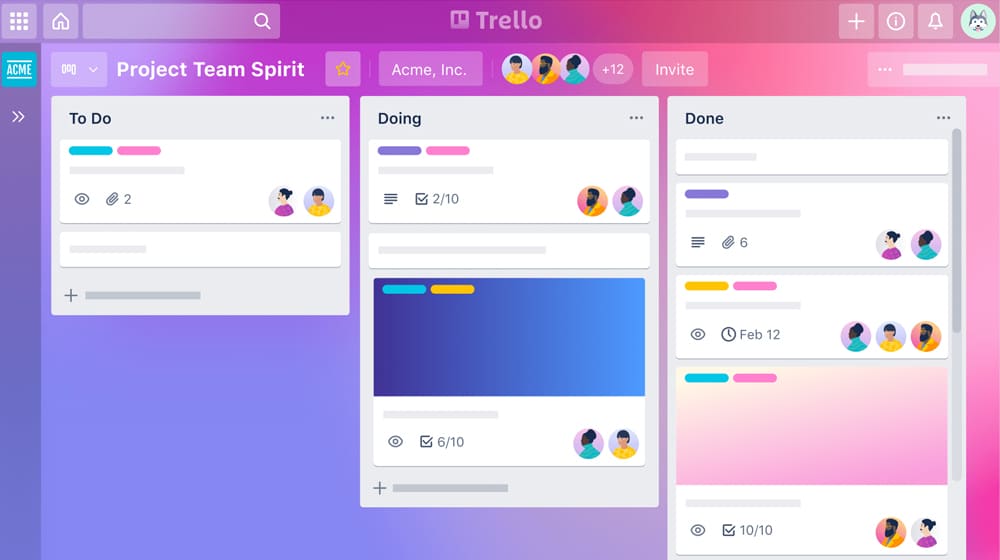
The number one thing to do, no matter what other strategies or channels you use to try to get feedback, is making sure you're asking at the right time.
- Immediately after a user opens their product. That Amazon technique where a card inserted into the packaging solicits a review? That never works because who will leave a review when they haven't even gotten to the product yet? That card just gets added to all the other packing material and tossed out.
- Ask for a review while the user is using your product. Primarily for web services and apps, here, if you're interrupting work (or play) the user is actively participating in, interrupting them gains their attention but makes them mad at the disruption. More of then than not, they'll close it to get back to what they were doing and have forgotten by the time they're done.
- Ask for a review before shipping has even been completed. I've seen this one a few times; you order something online and receive an email asking for a review before the item has even arrived. You're also on an email list without giving permission to be subscribed. Yeah, right.
The right time depends on how long it takes for the average user to use your product and figure out if they like it. This calculation might be immediately for a simple product, or it might take a few days or weeks of use before they figure it out. Figuring out the specific time for your product takes research, but it's well worth doing.
2: Ask During Success Milestones
This one can only work in specific situations. It's not going to happen for a vacuum cleaner, but it will for a web service. What is it? Track user behavior and usage of your product. Then, when they've accomplished something relevant, ask them for the review.

Take something like Canva, for example. If you don't know, it's a web app that lets you put together graphical assets to make marketing images. Canva could track how users use its program and, when they export/pay for a photo, present them with the opportunity to leave a review. It's a milestone that indicates a user has used the product successfully and is a great chance to ask for feedback.
Not only are you catching your client at the right time, but this also makes for powerful social proof. Visitors want to see your clients working with you and read successful case studies, and this is a great way to achieve that goal.
3: Follow a Feedback Process
I like the technique described in this post from Sixteen Ventures. The author describes asking users, not for a review but for feedback. "You've had our product for a while now; what do you like about it?"
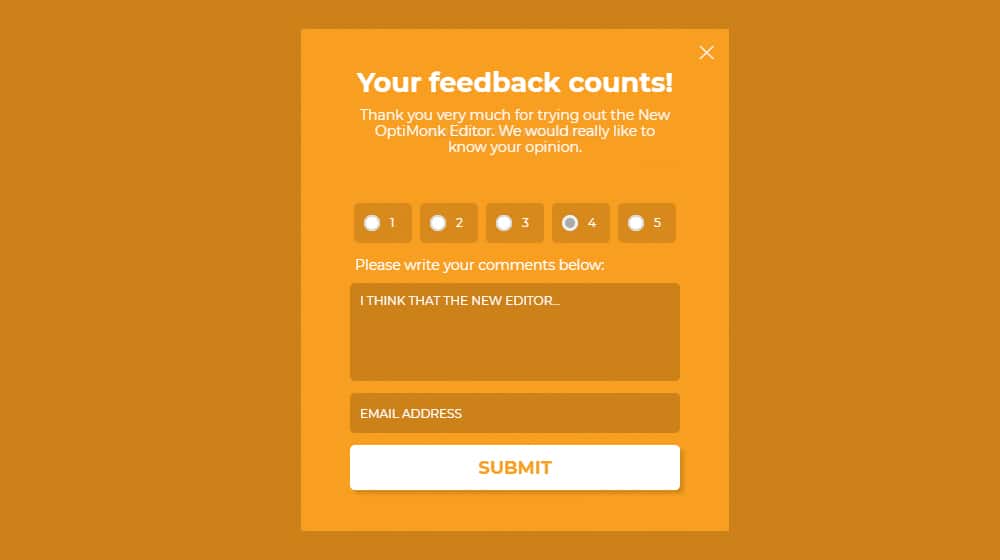
When they respond, follow up with them and ask more about it. It helps to encourage them to talk. Ask for clarification, something; be open-ended about it. Then, follow up again and say something like, "You know, what you've said would make for a great review. Would you be willing to post this on 'X' review site?" Or, ask if you can post it on your website. It's discussed in greater detail in the post mentioned above, so read it; I like it a lot.
4: Reduce Friction
One of the biggest tips I can give you is to reduce the friction inherent in your reviews process. You can think about it the same way you would a sales funnel; you want to minimize as many roadblocks as you can so users don't take the opportunity not to leave a review.

Putting a review button everywhere, asking for the bare minimum amount of information to submit, and giving them multiple options can all help.
5: Optimize Your CTA
This one is identical to your traditional content marketing and sales conversion optimization. You have calls to action in your marketing efforts, whether for customer testimonials, leads, sales pages, or conversions. It would help if you optimized them.

Whether that means changing and testing colors, positions, sizes, formats, text, animations, or whatever else, please try it. Yes, it takes a lot of work. Yes, it takes time. You must pay attention to analytics that tracks user behavior at a granular level. It's all worth it. A small change can result in a measurable increase in performance over time.
6: Have the Right Person Ask
This one is only relevant if you're part of a larger organization with a team of service and sales reps or account managers working with clients. Always try to have the person who has a personal relationship with the client be the one to ask for a great testimonial.
They're the ones with the closest awareness of each situation. They'll have a better feeling for timing, whether the client will leave a positive review or not, and so on. It's a moot point for small business owners who only have one person interacting with clients. Still, it's worth mentioning. If this is the first time your client relationship manager has spoken with this client, the customer may be less likely to respond to that email. Leverage your client's relationships with your team.
7: Provide Prompts
When you ask for a short testimonial, having some prompts on hand can help a lot. Even if they want to leave a good testimonial, many people won't have any idea what to write. By asking them the right questions, you can prompt them to write about what they like.
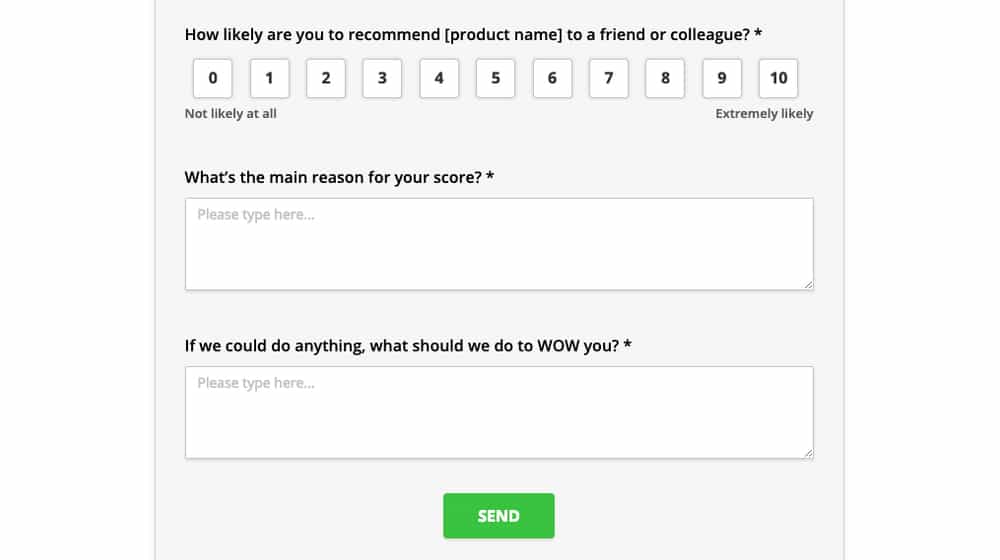
Consider asking 2-3 questions about a specific point in your product or service ("Was it easy to use? Did it handle well? Was it intuitive?") to prompt them to say something specific. You can format it to lean towards recently-released or promoted features to help as a form of encouragement for other users reading reviews.
8: Seek Existing Testimonials
There are probably quite a few people out there who have written client testimonials for you already, but those reviews are placed in locations you can't take advantage of, use, or show to others. It might be mentioned on Twitter, responses to posts on Facebook, reviews on blogs with no traffic, or reviews left on random review sites people don't typically use. There are even reputation management tools that automate this process.
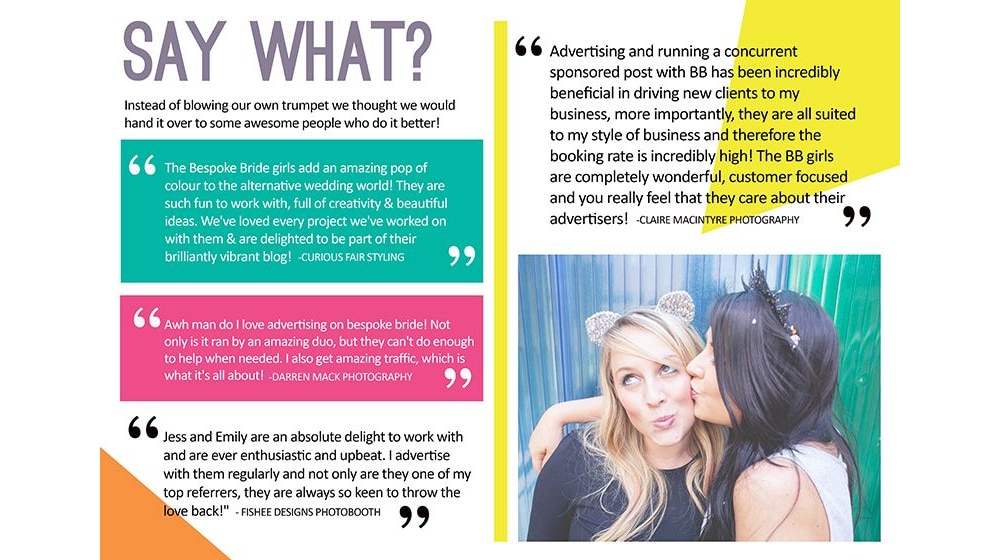
Find those reviews through Google searches (use negative modifiers to eliminate the common sites from results) and reach out to the people who left the reviews. Ask if they'd be willing to post or repost their review on a more prominent site, or your Google reviews, or even allow you to quote it for your website testimonials.
If you do decide to repost reviews, just be wary of the SEO and duplicate content implications. A few copied quotes probably won't hurt, but I wouldn't go too overboard.
9: Provide a Feedback Form
Another option is to use one slide-in or pop-up call-to-action scripts to promote a feedback form to customers. Ideally, it will only show to confirmed customers and not potential customers (so, put it on a customer-only page or something) and ask them for their feedback.
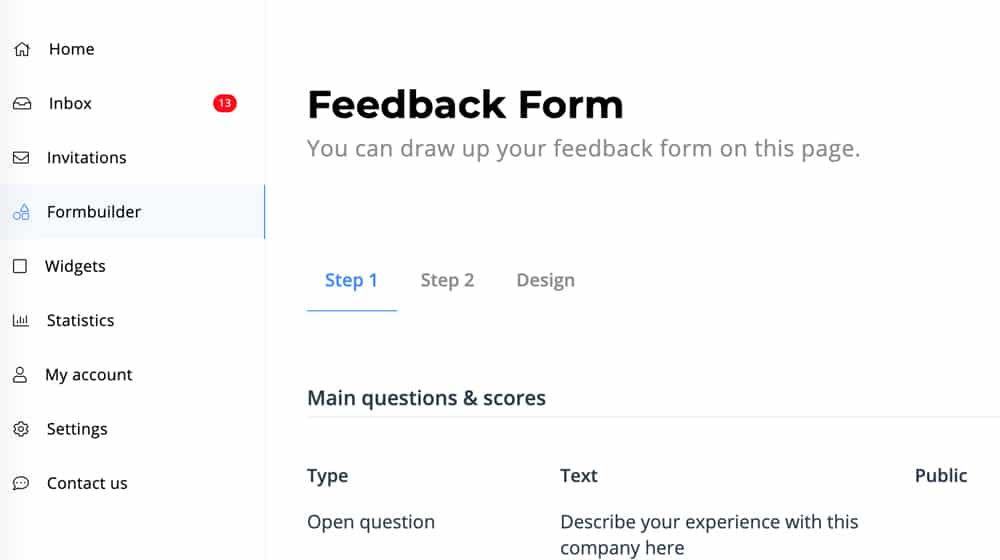
You can then use their responses as either the opportunity to reach out to ask for a testimonial or ask for the testimonial. If feedback from potential clients is valuable to you, too, you could create a seperate landing page for those visitors as well.
10: Change Your Wording
Asking for "a testimonial" looks pretty high importance. Some people will view that as stressful and decide to pass because they don't want that kind of weight to be put on their shoulders. If you ask for a review, it's a little lower importance, so they're more likely to do so. If you ask for feedback, it's even more casual and more likely. Of course, maybe some people want to feel important and will be more likely to leave a testimonial than feedback, so it's essential to use all of the available options in language to attract different kinds of people.
11: Accept Reviews in Many Places
Every good review is a good review if you know what I mean. Testimonials on your site, reviews on Google, and reviews on a prominent website like Yelp are critical. But, any review is a good review.

Not only do they present opportunities to reach out and ask for a repost elsewhere, but they can also attract people who use those specific sites, even if you don't think they're essential. You can even think out of the box and try things like video testimonials.
12: Look for LinkedIn Reviews
A trick Neil Patel mentions is looking for people leaving reviews on your employees on LinkedIn. This marketing strategy is valuable if your employees are customer-facing, so they get nuanced, detailed reviews from the clients they work with. You can then reference, copy, or ask for a copy of the reviews to use for the business as a whole.
13: Use Negative Reviews as Opportunities
Another valuable avenue you can use is negative reviews. That's right; when someone is dissatisfied and leaves a negative review, it's a chance for something positive to come from it. How?
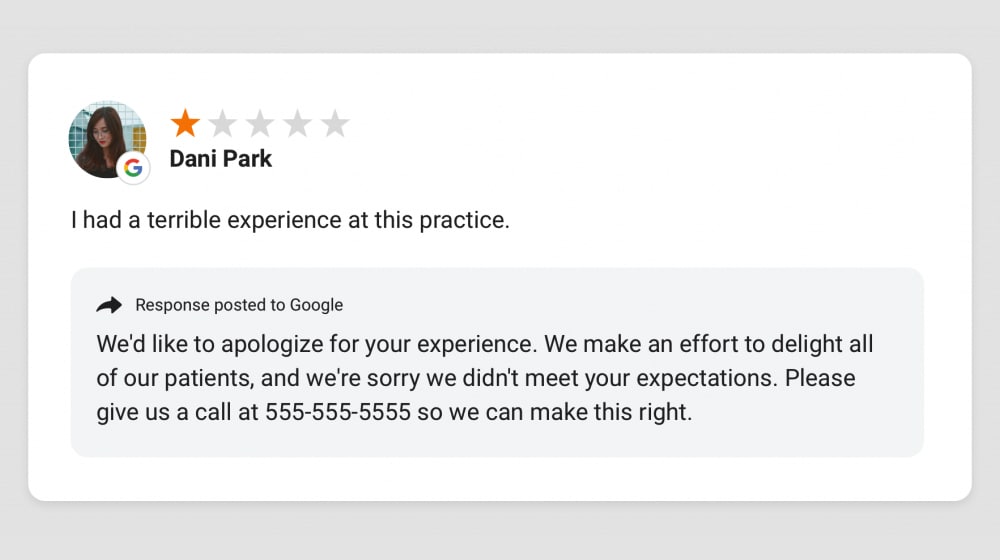
The first thing to do is investigate thoroughly. Make sure the review is legitimate and the customer is genuine. Investigate their complaint and see if there's anything you can do about it. This moment is your opportunity to provide exceptional service to win the user back. Through exemplary service, you can often change a 1-3-star review into a 4-5-star review through fixing the problem and being aggressively helpful. You have to make sure to ask them to edit their review when all is said and done.
14: Stop When Asked
Possibly the most essential thing to do when soliciting customer reviews and powerful testimonials while avoiding disruption is to give them an option to opt out. Asking your subscribers two or three times, that's fine. Asking five or six, you're asking for them to cancel, unsubscribe, or block you.

You don't necessarily need to do this for passive buttons on your website. You might want to set IP-based limits on your pop-overs so they aren't intrusive. For things like emails, though, it's better to offer to let them stop receiving messages about reviews or just stop after a couple of attempts. The point where it becomes actively harmful is when you should stop pushing for more.
On the topic of email marketing, a personalized email is likely to be much more effective than an email template, at least in my experience. Templates get ignored or land in the spam box, or both. Talk to them like you usually would. Your success rate will be much higher.
15: Provide Incentive
I'm putting this one last for one reason: it's tricky. You can incentivize reviews by offering some prize or compensation for them. Still, you have to be very careful not to fall into the definition of paying for reviews, which can be illegal. Incentives can be acceptable, but make sure to vet your reviews to make sure they're real and not just made by people looking to claim your prize.
So, there you have it; my list of ways to solicit reviews and grow your testimonials page without bugging your clients or running into trouble along the way.
Do you have one to add? Please let me know in the comments area below!










January 04, 2022
Great list, James. Feedback forms and prompts have always worked for me although I'm curious to see how I could implement providing incentives. It does seem very tricky. What do you think will work?
January 12, 2022
It's worth a try!
I think sending a personalized email is going to get a better response rate, just like with any email marketing strategy.
If you have thousands of customers though, a personalized email to each one is not realistic.
If you're an agency with a small handful of clients, handwritten emails is the way to go.
February 08, 2022
These are great strategies. I was just using Canva the other day and I have to say that I really do like their strategy! It's definitely great timing to ask for feedback when a user has success with your product. I'm gonna see how I could implement that with our own.
February 10, 2022
Thanks Lisa!